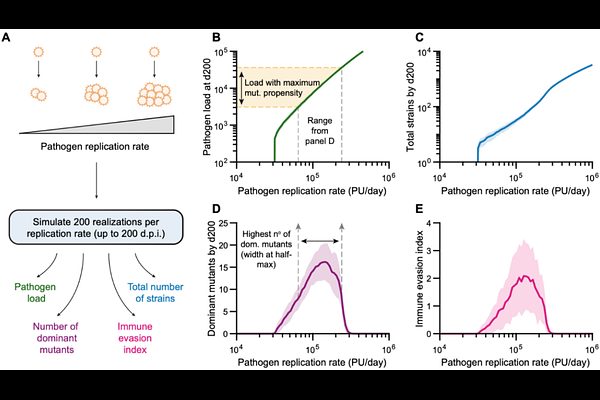Within-host viral evolution varies with T cell receptor repertoire diversity independently of viral mutation rates

Within-host viral evolution varies with T cell receptor repertoire diversity independently of viral mutation rates
Jamaleddine, H.; Khadra, A.; Mandl, J. N.
AbstractThe specific T cell receptors (TCRs) present in an individual determine which antigens can be recognized, and hence a repertoire comprised of a vast number of unique TCRs ensures an effective T cell response can be mounted against a broad range of potential pathogens encountered. To evade the T cell response, pathogens, and viruses in particular, can accrue epitope escape mutations, establishing a host-pathogen \'tug-of-war\' between T cell-mediated control and viral evolution. Indeed, the evolutionary significance of TCR diversification in mammals is underscored by the sophisticated molecular machinery - spanning from somatic V(D)J recombination through non-templated nucleotide additions - that establish the TCR repertoire. Yet, whether greater oligoclonality among responding T cells, as is the case for elderly or immunocompromised individuals, might therefore accelerate pathogen immune escape remains unclear. Here, we constructed a computational model of T cell-mediated viral evolution to investigate how the number of unique virus-specific T cells clones impacts the balance between curtailing viral load through cross-reactivity to mutant strains on the one hand, versus promoting the generation of escape variants on the other. The model recapitulated prior experimental findings, such as T cell-dependent emergence of new viral mutants and the progressive decrease in the number of T cell clones present in the response over time. Our model simulations suggested that oligoclonality in the virus-specific T cell response can, if coupled with a resulting increase in viral replication, maximize viral immune escape despite constant mutation rates, revealing a mechanism for how viruses with comparable mutation rates can nonetheless exhibit dramatically different adaption rates within hosts. Taken together, the model results suggest that variations in TCR repertoire diversity, and consequently in the number of pathogen-specific T cell clones within an individual, can have direct, non-linear impacts on viral immune escape.